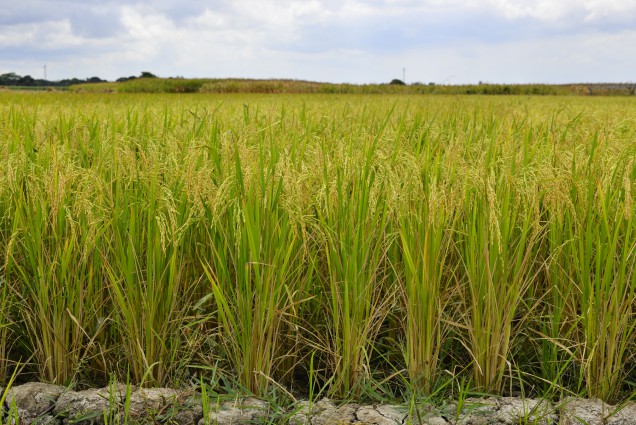 Farmers with insufficient water supply are advised to adopt early-maturing varieties or with maturity days less than 110 this coming dry season.
Farmers with insufficient water supply are advised to adopt early-maturing varieties or with maturity days less than 110 this coming dry season.
According to Philippine Rice Research Institute (PhilRice)’s in-house agriculturist and Text Center lead agent Fredierick M. Saludez, early-maturing varieties require lesser water, as they can mature faster than other inbred varieties.
“A rice crop that matures in 100 days will require approximately 1000mm of water while a crop that matures in 150 days will require 50% more. For rainfed and irrigated areas, using these varieties will reduce the water needed and the number of days in supplying water,” he explained.
Farmers in irrigated areas are recommended to plant include PSB Rc 4 (Molawin), Rc 8 (Talavera), Rc 10 (Pagsanjan), Rc 82 (Peñaranda), NSIC Rc 118 (Matatag 3), Rc 120 (Matatag 6), Rc 130 (Tubigan 3), Rc 134 (Tubigan 4), Rc 140 (Tubigan 6), Rc 144 (Tubigan 8), Rc 146 (PJ7), Rc 148 (Mabango 2), Rc 152 (Tubigan 10), Rc 154 (Tubigan 11), Rc 242 (Japonica 2), Rc 436 (Tubigan 37), Rc 438 (Tubigan 38), and Rc 440 (Tubigan 39).
PSB Rc 12(Caliraya), Rc 14(Rio Grande), and NSIC Rc 192(Sahod Ulan 1) are suitable in rainfed areas. Average yield of these varieties ranges from 4 to 10t/ha. They mature between 105 and 110 days compared to 115-125 days for other varieties.
“Reduction in yield happens when rice plants are exposed to stress like drought, especially during the flowering stage. With early-maturing varieties, this is less likely to happen,” Saludez said.
A series of studies from the Plant Breeding and Biotechnology Division showed an average of 64% yield reduction, under drought condition, during dry season from 2015 to 2018.
Moreover, Saludez recommended water-saving technologies, such as the alternate-wetting, and drying (AWD). AWD is a water-saving technology that reduces the use of irrigation water without penalizing crop yield.
Based on studies, rice farmers in lowland areas can save water by up to 50%, if properly implemented. Locally available materials such as bamboo or PVC tubes with 4 inch diameter and 25cm in length are used to install AWD.
Mario M. Ermita, 52, from Masinloc, Zambales testified that AWD is a effective, as it helped him save water in irrigating his farm.
“I used to irrigate my area twice a week. With AWD, I learned that I can just pump water once a week,”Igmedio said.
Technology promoters advised that farmers should also put holes (3-5mm) to serve as a water passage, around the tube with 5cm distance. This will be inserted into the soil up to the 15cm marked for dry season and 20cm marked for wet season. Every irrigation time 5cm deep is enough.
“Farmers will just have to wait until the water subside down to the bottom of the tube before the next irrigation,” AWD researchers said.
In technology dissemination, Saludez urged agriculturists from the local government units, rice technicians, extension workers, and rice advocates to promote the use of these technologies for farmers to avoid yield losses during dry season.




